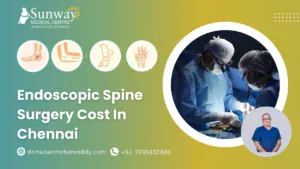Orthopedic recovery solutions are essential for restoring movement, reducing pain, and improving the overall quality of life after an injury or surgery. Whether it’s a joint replacement, spine surgery, or a sports-related injury, the right recovery strategy can make a huge difference in healing. The journey to recovery doesn’t end with surgery; it requires careful rehabilitation, guided mobility exercises, and, in some cases, non-surgical pain management techniques to speed up healing. With advances in orthopedic physical therapy, customized rehabilitation plans, and assistive devices, patients can regain strength and resume daily activities much faster.
The key to effective orthopedic recovery lies in following a structured approach that includes exercise, pain management, and lifestyle adjustments. Understanding how post-surgical mobility and rehabilitation work together helps patients achieve long-term success. In this guide, we’ll explore different orthopedic recovery solutions, including innovative treatments, therapy methods, and preventive measures to ensure a smooth healing process with guidance from the best orthopedics doctor.
Importance of Orthopedic Recovery Solutions
Recovery after an orthopedic procedure or injury requires a well-structured rehabilitation plan. This helps in regaining strength, improving flexibility, and reducing pain over time. Proper orthopedic recovery solutions involve a mix of physical therapy, exercise, and supportive treatments that aid in restoring normal body function. One of the biggest challenges patients face after surgery is maintaining post-surgical mobility while minimizing the risk of complications. Movement plays a vital role in recovery, but improper rehabilitation can lead to stiffness and muscle weakness.
A comprehensive recovery plan ensures:
- Faster healing and reduced pain
- Prevention of muscle atrophy and joint stiffness
- Improved flexibility and range of motion
- Lower chances of post-surgical complications
Each patient’s recovery journey is unique, and orthopedic specialists create tailored programs based on the individual’s condition. From non-surgical pain management methods like physiotherapy and acupuncture to advanced rehabilitation techniques, the right approach can help patients return to their normal routine with minimal discomfort. A combination of structured exercise and proper guidance ensures a smoother transition from post-surgery care to full recovery.
Non-Surgical Pain Management for Faster Recovery
Not all orthopedic conditions require surgery; many can be managed effectively with non-surgical pain management techniques. These methods focus on reducing pain, improving joint function, and enhancing overall mobility. Here are some of the most effective approaches:
A. Physical Therapy
- Strengthening exercises and mobility training improve movement without invasive procedures.
- Helps in regaining flexibility and reducing stiffness.
B. Medication & Injections
- Anti-inflammatory drugs and pain relievers provide short-term relief.
- Corticosteroid injections help in reducing severe joint pain and inflammation.
C. Alternative Therapies
- Acupuncture, massage therapy, and hydrotherapy promote healing.
- Chiropractic adjustments can improve spinal alignment and posture.
D. Assistive Devices
- Knee braces, orthotics, and supportive footwear reduce strain on joints.
- Crutches or walkers help maintain post-surgical mobility safely.
By integrating these non-surgical pain management techniques, patients experience better pain control and enhanced mobility. These methods can be used independently or combined with other orthopedic recovery solutions for long-term benefits.
Post-Surgical Mobility and Its Role in Recovery
After orthopedic surgery, maintaining post-surgical mobility is critical for preventing stiffness and muscle atrophy. Many patients experience difficulties resuming daily activities due to pain or discomfort. A well-structured rehabilitation program ensures smooth movement recovery and helps in strengthening muscles.
Key Components of Post-Surgical Mobility
- Early Movement – Encouraging controlled movement soon after surgery improves circulation and speeds up healing.
- Assistive Devices – Walkers, braces, and crutches provide stability and support during initial recovery.
- Strength Training – Progressive exercises restore flexibility and prevent long-term mobility issues.
Following a well-designed post-surgical mobility plan not only enhances recovery but also minimizes the risk of complications. Patients who actively participate in their rehabilitation programs tend to regain full mobility faster. The ultimate goal of any orthopedic recovery solutions is to help individuals move freely and confidently without pain or restrictions, ensuring long-term mobility and overall well-being.
Advanced Rehabilitation Techniques for Better Recovery
Advancements in medical science have introduced cutting-edge rehabilitation techniques that accelerate orthopedic recovery. Some of these include:
A. Hydrotherapy
- Water-based exercises reduce stress on joints.
- Improves flexibility without causing additional strain.
B. Neuromuscular Training
- Helps retrain the body for proper movement after an injury.
- Reduces the risk of future joint problems.
C. Robotic-Assisted Therapy
- Enhances precision in rehabilitation exercises.
- Used in post-surgical recovery for joint replacements.
D. Electrical Stimulation Therapy
- Stimulates muscles to improve strength.
- Beneficial for those with limited mobility.
These advanced orthopedic recovery solutions ensure a faster, more efficient healing process, helping patients regain full function with minimal discomfort.
Nutrition and Lifestyle Adjustments for Orthopedic Healing
A proper diet and lifestyle play a crucial role in orthopedic recovery. Essential aspects of healing include:
- Balanced Diet – Protein and calcium-rich foods strengthen bones and muscles.
- Hydration – Drinking sufficient water keeps joints lubricated and reduces stiffness.
- Quality Sleep – Proper rest allows tissues to heal faster.
- Weight Management – Maintaining a healthy weight prevents excess pressure on joints.
By following a structured orthopedic recovery solutions plan along with a healthy lifestyle, patients can improve their healing process and prevent future injuries.
Long-Term Strategies for Preventing Orthopedic Issues
To avoid future orthopedic problems, patients should focus on:
A. Regular Exercise
- Strengthens muscles and improves flexibility.
- Reduces the risk of injuries.
B. Weight Management
- Prevents joint strain and mobility issues.
- Helps in reducing chronic pain symptoms.
C. Routine Check-Ups
- Early detection of potential problems.
- Prevents minor issues from becoming severe.
By incorporating these long-term strategies, individuals can maintain orthopedic recovery solutions for better orthopedic health and reduce the likelihood of surgeries in the future.
Conclusion
Orthopedic recovery solutions provide a structured approach to healing, ensuring long-term mobility and pain relief. Whether through post-surgical mobility techniques, non-surgical pain management, or lifestyle modifications, a proper recovery plan accelerates healing and prevents complications. With advancements in physical therapy, alternative treatments, and rehabilitation techniques, patients have access to more personalized recovery strategies than ever before. By taking an active role in their healing journey, individuals can regain strength, flexibility, and confidence in their movements. A dedicated approach to recovery not only restores function but also enhances overall well-being, ensuring a healthier and pain-free future.






